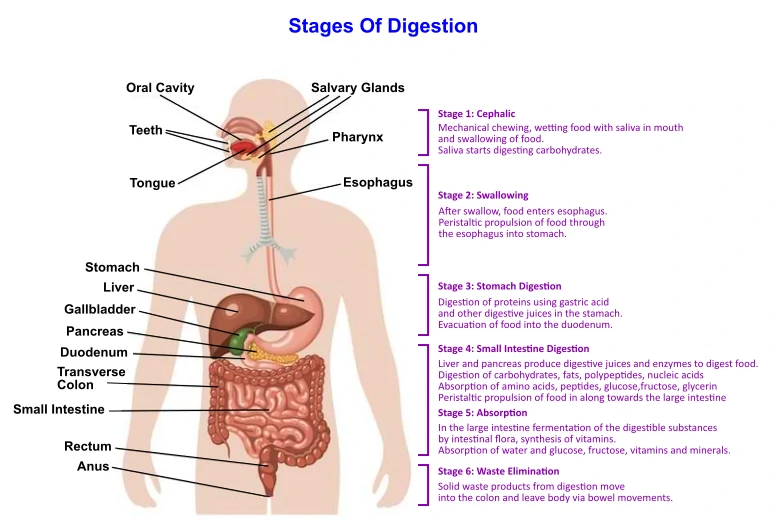Ray Model Of Light
In this article, the following are the objectives that will be discussed.
- Understand what light is.
- Understand what reflection is and how it is affected by different surfaces using the ray model of light.
- Describe the effects and uses of reflecting surfaces.
What is Light?
Light is an important source of energy.

Image Credits: unsplash - Andrey Grinkevich
The Sun is a natural source of light, which can be converted into different forms of energy.
How fast does light travel?
Light travels at the speed of 3 × 108 m/s in a vacuum.
The speed of light changes as it travels through different media.
Comparing between solids, liquids and gases, light travels the fastest in gases and the slowest in solids.
How does light travel?
Light travels in a straight line. A light ray is a thin line of light coming from a source, which can be represented as shown below.

A bundle of light rays is called a beam of light, which can be represented as shown below:

Reflection
What is reflection?
Reflection is the bouncing of light rays off a surface.
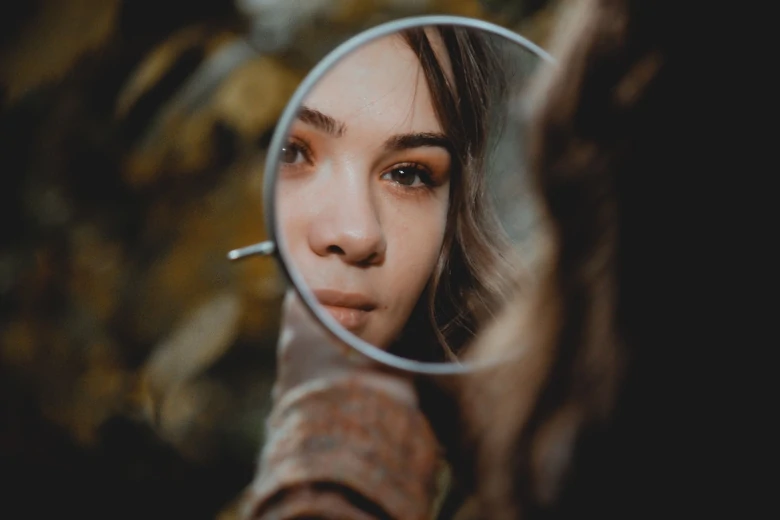
Image Credits: unsplash - Elisa Photography
Characteristics of an image formed on a Plane Mirror
- An image formed is of the same size as the object.
- The image formed is upright.
- The image formed is laterally inverted.
- The image formed is virtual (not real, and cannot be projected onto a screen).
- The distance between the object and the image from the mirror is the same.
Law of Reflection
The diagram below shows the ray model of light to depict how a smooth and flat surface reflects light.
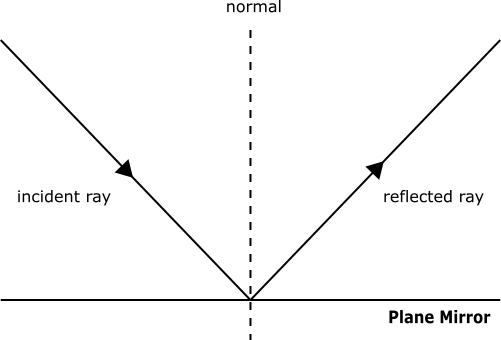
What are the two laws of reflection?
- The angle of incidence is equal to the angle of reflection.
- The incident ray, reflected ray, and normal all lie on the same plane.
Drawing of the Ray Model Diagram
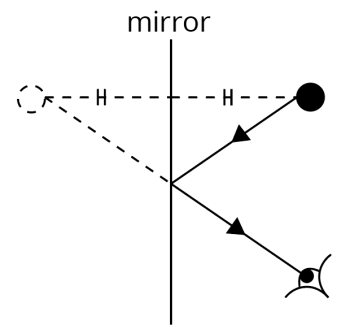
Steps taken to draw the ray model diagram:
- Measure the distance between the object to the mirror.
- Since the distance between the object and the image from the mirror is the same, using the same distance, measure the distance of the image to the mirror. *The image should be drawn in dotted lines.
- Using a ruler, draw a straight line from the image on the mirror to where the eye is. Do note that a dotted line, representing the light ray, should be drawn in the mirror and a normal line drawn as the light ray enters into the eye.
- To show that the light ray is reflected off the object, draw a straight line from the object to the light ray coming from the mirror.
Types of Reflection
What are the types of reflection?
There are two types of reflection, which are dependent on the texture of the surface.
- regular reflection
- irregular reflection
-
Regular Reflection
Regular reflection occurs on a smooth surface (e.g. plane mirror). The image formed is clear and undistorted.
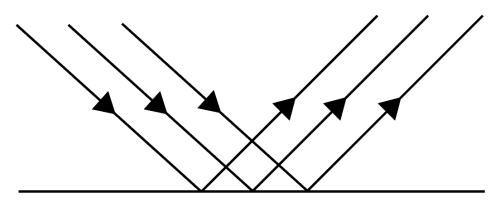
When parallel light rays are reflected off the plane mirror, the reflected rays are also parallel to each other.
-
Irregular Reflection
Irregular reflection, also known as diffused reflection, occurs on a rough surface (e.g. a plank of wood). No image will be formed on the surface.
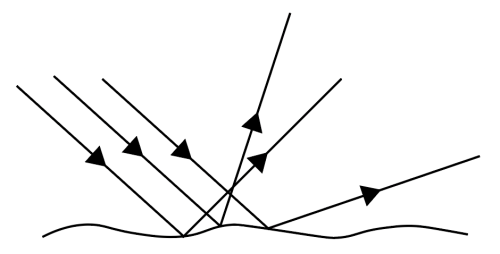
Types of Reflecting Surfaces
What are the different types of reflecting surfaces?
There are three types of reflecting surfaces:
- plane mirrors
- concave mirrors
- convex mirrors
-
Plane Mirrors
Plane mirrors form images that are upright and undistorted.

Image Credits: unsplash - Andre Mouton
Another common use of the plane mirror is in the periscope, which is a tube with two plane mirrors that are set up at 45o to the horizontal.
-
Concave Mirrors
Concave mirrors, also known as converging mirrors, have a surface that bends inwards. This causes the reflected light rays to focus on a single point. The image that is formed on a concave mirror is virtual and magnified.
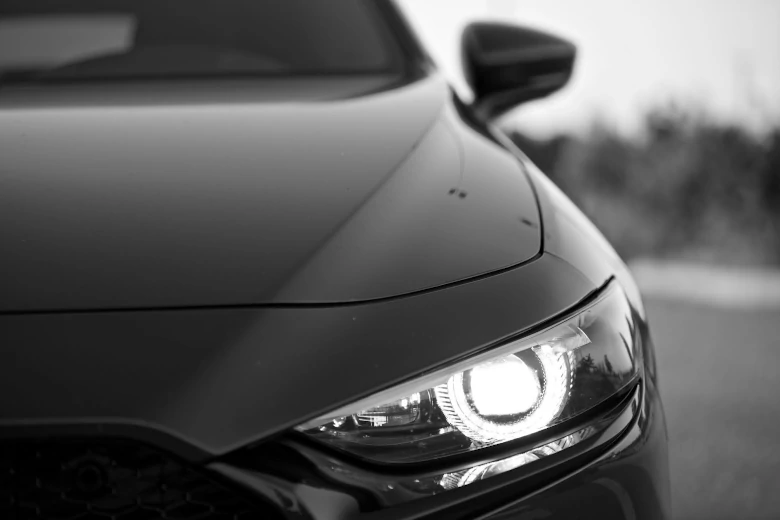
Image Credits: unsplash - Bruno Pardini
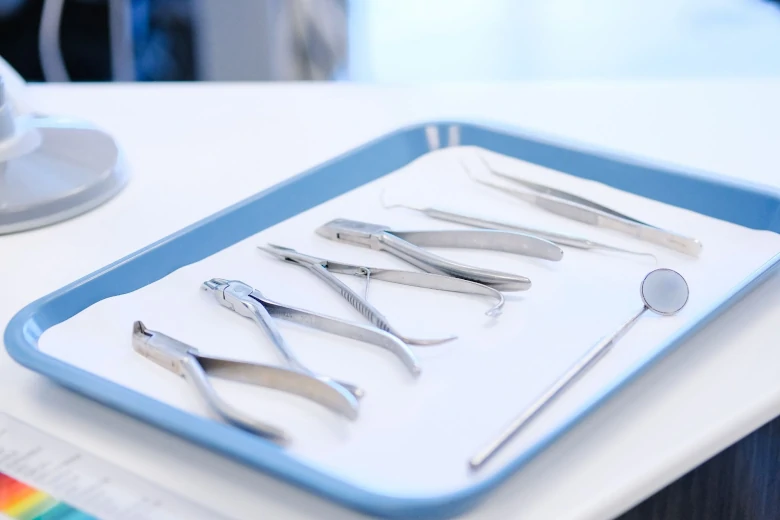
Image Credits: unsplash - Kenny Eliason
Concave mirrors are often used in car headlights and dentist’s mirrors.
-
Convex Mirrors
Convex mirrors, also known as diverging mirrors, have a surface that bends outwards. Convex mirrors cover a wider field of vision.
The image that is formed on a concave mirror is virtual and magnified.
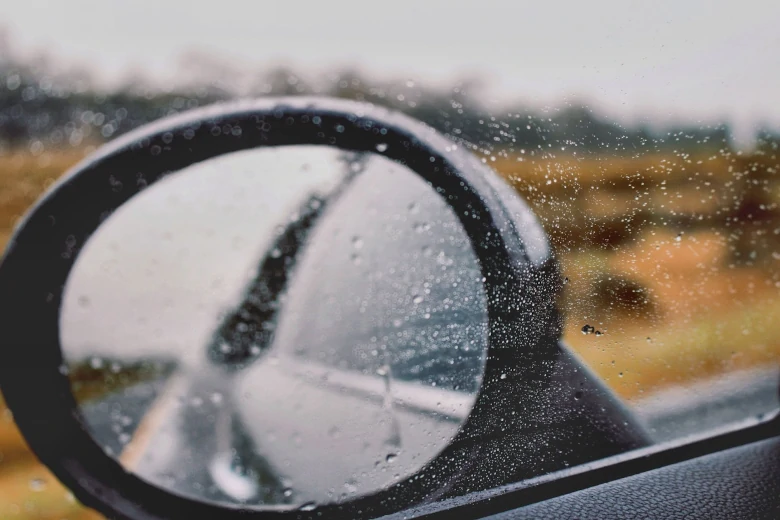
Image Credits: unsplash - Devon Janse van Rensburg
Convex mirrors are often used in the side mirrors in cars and blind corner mirrors along the roads.
Revision Questions
Here are some questions for us to look into on the objectives of this article.
Question 1:
Which of the following can light rays be represented?
- converging
- diverging
- parallel
- perpendicular
Choose the correct option
- I and III only
- II and IV only
- I, II and III only
- all of the above
Solution:
(C) I, II and III only
Explanation:
A beam of light can only be represented in three ways, which are:

Question 2:
Which of the following reflections is formed on a smooth surface?
- irregular
- large
- regular
- small
Solution:
(C) regular
Explanation:
There are two kinds of reflection based on the surface texture: regular reflection and irregular reflection.
Regular reflection occurs on a smooth surface (e.g. plane mirror), where the image formed is clear and undistorted. while irregular reflection, also known as diffused reflection, occurs on a rough surface (e.g. a plank of wood), where no image is formed on the surface.
Question 3:
Which of the following correctly describes a virtual image?
- can be formed on a screen
- cannot be formed on a screen
- not real
- real
Choose the correct option
- I and III
- I and IV
- II and III
- II and IV
Solution:
(C) II and III
Explanation:
One of the characteristics of the image formed on a plane mirror is that it is virtual. A virtual image is not real and cannot be projected on a screen.
Question 4:
A boy stands 55 cm away from the mirror. A box was placed 25 cm behind the boy. What is the distance between the boy and the box in the mirror?
- 80 cm
- 110 cm
- 135 cm
- 160 cm
Solution:
(C) 135 cm
Explanation:
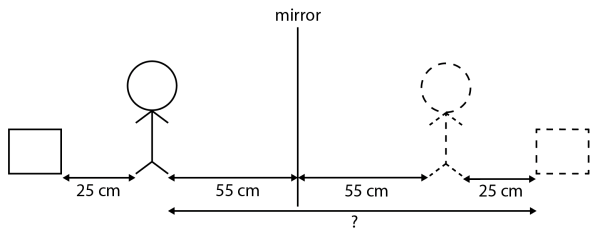
Distance between boy and image in the mirror
= 55 + 55 + 25
= 135 cm
Question 5:
Read the following statement about the law of reflection. Determine if the statement is correct or incorrect.
“The angle of incidence is always similar to the angle of reflection.”
- correct
- incorrect
Solution:
(B) incorrect
Explanation:
The angle of incidence is always equal to the angle of reflection.
Question 6:
Read the following statement about the law of reflection. Determine if the statement is correct or incorrect.
“The incident ray and reflected ray lie on the same plane.”
- correct
- incorrect
Solution:
(A) correct
Explanation:
To be specific, the incident ray, reflected ray and normal all lie on the same plane.
Question 7:
The diagram shows a light ray hitting a hard surface.
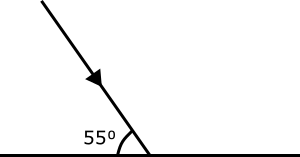
Determine the angle of reflection.
- 35°
- 55°
- 110°
- 124°
Solution:
(A) 35°
Explanation:
Angle of incidence
= 90° - 55°
= 35°
Since the angle of incidence is equal to the angle of reflection, the angle of reflection will also be 35°.
Test Yourself
Which of the following phenomenon is not due to the speed of light?
I: Lightning is observed before thunder is heard.
II. A straw inside a glass of water appears to be bent.
III. A swimming pool appears shallower than it actually is.
IV. A beam of light shining through the window lights up the room.
A beam of light lighting up the room does not depend on the speed of light. For (II) and (III), the phenomenon is due to speed of light being slower in water than in air. For (I), the phenomenon is due to the speed of light being faster than the speed of sound.
Ans: (IV) A beam of light shining through the window lights up the room.
Which of the following is not a source of light?
Radio is a source of sound.
Ans: (D) Radio
Which of the following surface will show a regular reflection?
Cloth, Paper and Road will show a diffused reflection due to irregularities on the surface.
Ans: (D) Mirror
Which mirror is used as a blind corner mirror?
A convex mirror has a wider view than a plane mirrors. Convex mirrors are used as blind corner mirrors on the road to help drivers view traffic around sharp corners.
Ans: (C) Convex Mirror
A ray of light passes through a glass prism and dispersion of light takes place. Which colour of the light will bent the most?
After passing through a glass prism, the colours of white light is dispersed. Red light bends the least and violet bends the most.
Ans: (C) Violet




 SG
SG  VN
VN 

